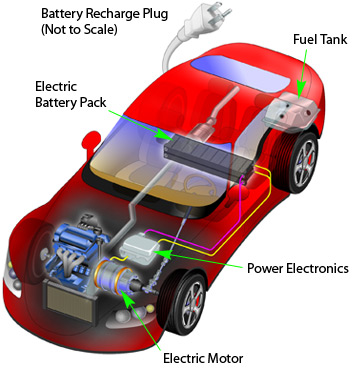What is a Plug-in Hybrid Electric Vehicle?

Plug-in hybrid electric vehicles (PHEVs) can be charged with electricity like pure electric vehicles and run under engine power like hybrid electric vehicles. The combination offers increased driving range with potentially large fuel and cost savings, emissions reductions, and other benefits.
Like hybrid electric vehicles, PHEVs are powered by two energy sources-an energy conversion unit and an energy storage device. The energy conversion unit can be powered by gasoline, diesel, compressed natural gas, hydrogen, or other fuels. The batteries can be charged by plugging into a standard 110-volt electrical outlet-a capability conventional hybrid electric vehicles do not have-in addition to being charged by the energy conversion unit when needed.
Plug-in hybrid electric vehicles have a larger battery pack than conventional hybrid electric vehicles. During typical daily driving, most of a PHEV’s power comes from the stored electricity. For example, a PHEV driver might drive to and from work on all-electric power, plug in the vehicle to charge it at night, and be ready for another all-electric commute in the morning. However, the engine can be used when longer trips are required, and the PHEV does not need to be plugged in to operate.
Where Can I Get More Information?
The Alternative Fuels and Advanced Vehicles Data Center has a good overview of plug-in hybrids as well as the vehicle-to-grid concept which will allow a two-way connection between the plug-in hybrid electric vehicle and the local utility grid. The AFDC has also compiled a list of plug-in hybrid electric vehicle related links for your information.
The information above was obtained from the Alternative Fuels Data Center, which is a great technical resource on all alternative fuels and vehicles. Source link: http://www.eere.energy.gov/afdc/vehicles/plugin_hybrids.html.
